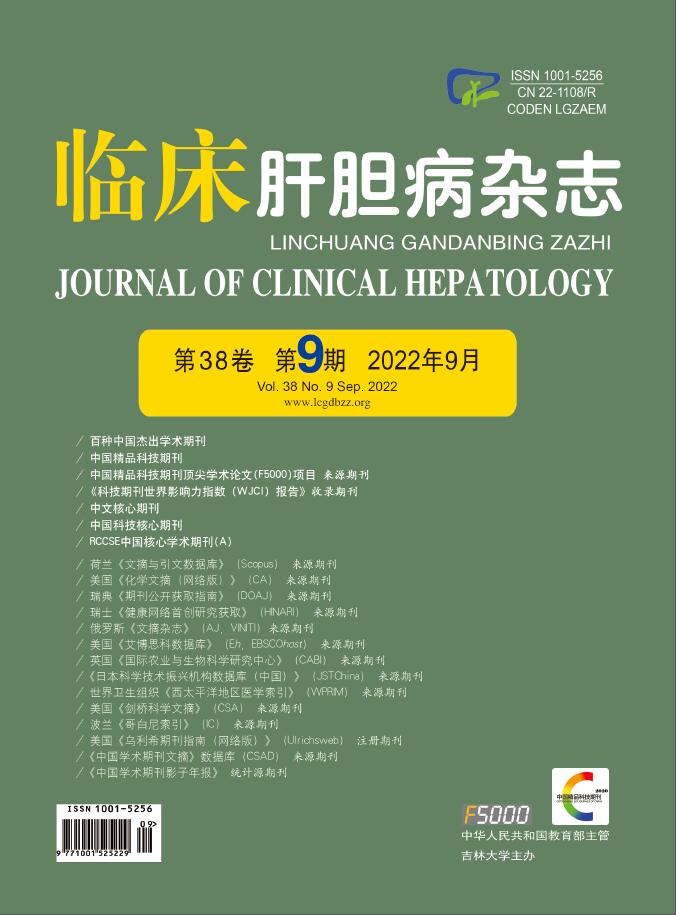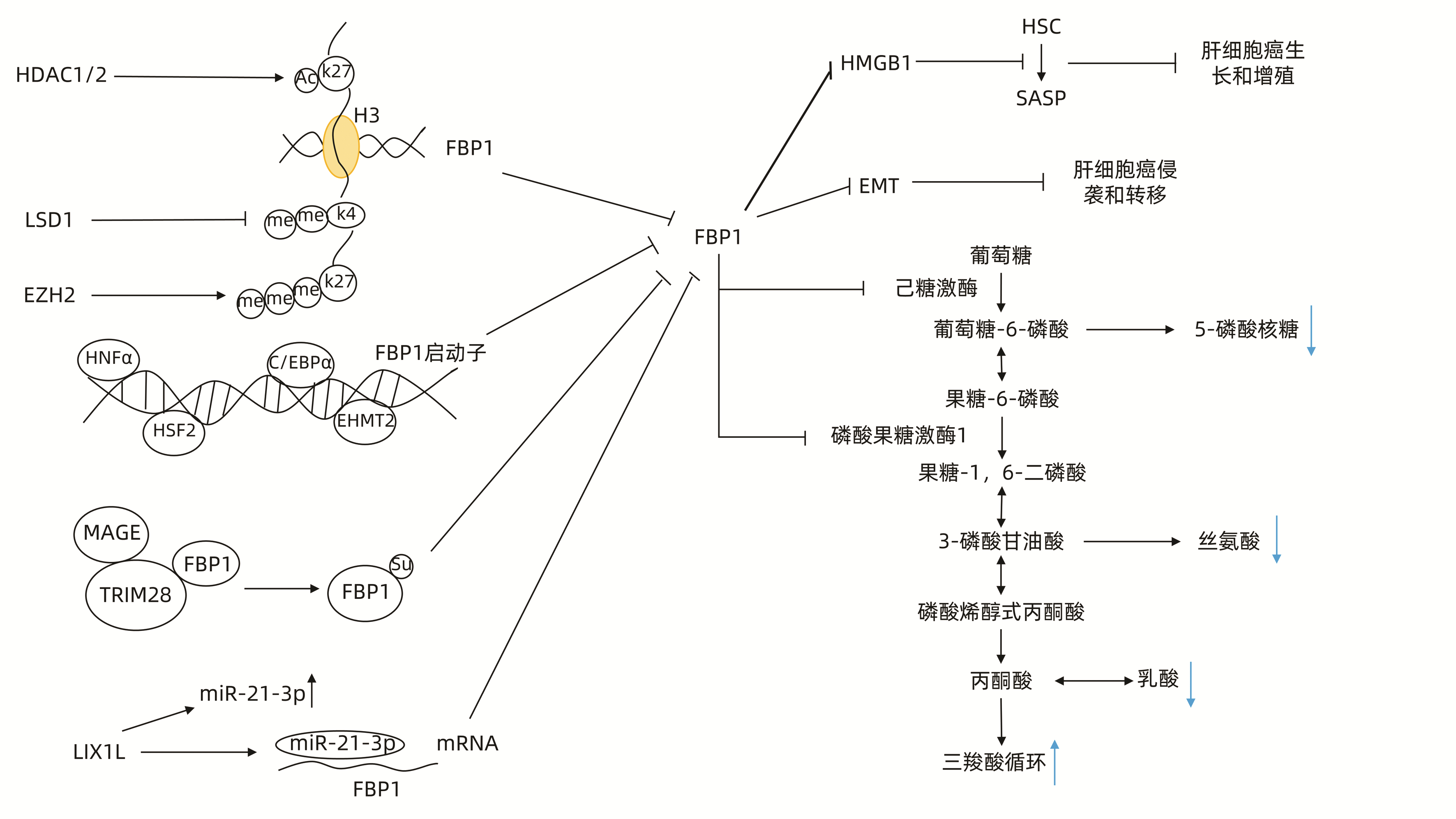| [1] |
SUNG H, FERLAY J, SIEGEL RL, et al. Global cancer statistics 2020: GLOBOCAN estimates of incidence and mortality worldwide for 36 cancers in 185 countries[J]. CA Cancer J Clin, 2021, 71(3): 209-249. DOI: 10.3322/caac.21660. |
| [2] |
VIBERT E, SCHWARTZ M, OLTHOFF KM. Advances in resection and transplantation for hepatocellular carcinoma[J]. J Hepatol, 2020, 72(2): 262-276. DOI: 10.1016/j.jhep.2019.11.017. |
| [3] |
|
| [4] |
VANDER HEIDEN MG, CANTLEY LC, THOMPSON CB. Understanding the Warburg effect: the metabolic requirements of cell proliferation[J]. Science, 2009, 324(5930): 1029-1033. DOI: 10.1126/science.1160809. |
| [5] |
DEBERARDINIS RJ, LUM JJ, HATZIVASSILIOU G, et al. The biology of cancer: metabolic reprogramming fuels cell growth and proliferation[J]. Cell Metab, 2008, 7(1): 11-20. DOI: 10.1016/j.cmet.2007.10.002. |
| [6] |
|
| [7] |
FISCHER K, HOFFMANN P, VOELKL S, et al. Inhibitory effect of tumor cell-derived lactic acid on human T cells[J]. Blood, 2007, 109(9): 3812-3819. DOI: 10.1182/blood-2006-07-035972. |
| [8] |
FENG J, LI J, WU L, et al. Emerging roles and the regulation of aerobic glycolysis in hepatocellular carcinoma[J]. J Exp Clin Cancer Res, 2020, 39(1): 126. DOI: 10.1186/s13046-020-01629-4. |
| [9] |
SMOLLE E, LEKO P, STACHER-PRIEHSE E, et al. Distribution and prognostic significance of gluconeogenesis and glycolysis in lung cancer[J]. Mol Oncol, 2020, 14(11): 2853-2867. DOI: 10.1002/1878-0261.12780. |
| [10] |
LEITHNER K, TRIEBL A, TRÖTZMVLLER M, et al. The glycerol backbone of phospholipids derives from noncarbohydrate precursors in starved lung cancer cells[J]. Proc Natl Acad Sci U S A, 2018, 115(24): 6225-6230. DOI: 10.1073/pnas.1719871115. |
| [11] |
VINCENT EE, SERGUSHICHEV A, GRISS T, et al. Mitochondrial phosphoenolpyruvate carboxykinase regulates metabolic adaptation and enables glucose-independent tumor growth[J]. Mol Cell, 2015, 60(2): 195-207. DOI: 10.1016/j.molcel.2015.08.013. |
| [12] |
LU C, REN C, YANG T, et al. Fructose-1, 6-bisphosphatase 1 interacts with NF-κB p65 to regulate breast tumorigenesis via PIM2 induced phosphorylation[J]. Theranostics, 2020, 10(19): 8606-8618. DOI: 10.7150/thno.46861. |
| [13] |
LI K, YING M, FENG D, et al. Fructose-1, 6-bisphosphatase is a novel regulator of Wnt/β-Catenin pathway in breast cancer[J]. Biomed Pharmacother, 2016, 84: 1144-1149. DOI: 10.1016/j.biopha.2016.10.050. |
| [14] |
WANG Z, DONG C. Gluconeogenesis in cancer: Function and regulation of PEPCK, FBPase, and G6Pase[J]. Trends Cancer, 2019, 5(1): 30-45. DOI: 10.1016/j.trecan.2018.11.003. |
| [15] |
WANG B, HSU SH, FRANKEL W, et al. Stat3-mediated activation of microRNA-23a suppresses gluconeogenesis in hepatocellular carcinoma by down-regulating glucose-6-phosphatase and peroxisome proliferator-activated receptor gamma, coactivator 1 alpha[J]. Hepatology, 2012, 56(1): 186-197. DOI: 10.1002/hep.25632. |
| [16] |
ZOU J, ZHU X, XIANG D, et al. LIX1-like protein promotes liver cancer progression via miR-21-3p-mediated inhibition of fructose-1, 6-bisphosphatase[J]. Acta Pharm Sin B, 2021, 11(6): 1578-1591. DOI: 10.1016/j.apsb.2021.02.005. |
| [17] |
LIU MX, JIN L, SUN SJ, et al. Metabolic reprogramming by PCK1 promotes TCA cataplerosis, oxidative stress and apoptosis in liver cancer cells and suppresses hepatocellular carcinoma[J]. Oncogene, 2018, 37(12): 1637-1653. DOI: 10.1038/s41388-017-0070-6. |
| [18] |
GRASMANN G, SMOLLE E, OLSCHEWSKI H, et al. Gluconeogenesis in cancer cells - Repurposing of a starvation-induced metabolic pathway?[J]. Biochim Biophys Acta Rev Cancer, 2019, 1872(1): 24-36. DOI: 10.1016/j.bbcan.2019.05.006. |
| [19] |
|
| [20] |
LEE MH, DEBERARDINIS RJ, WEN X, et al. Active pyruvate dehydrogenase and impaired gluconeogenesis in orthotopic hepatomas of rats[J]. Metabolism, 2019, 101: 153993. DOI: 10.1016/j.metabol.2019.153993. |
| [21] |
HIRATA H, SUGIMACHI K, KOMATSU H, et al. Decreased expression of fructose-1, 6-bisphosphatase associates with glucose metabolism and tumor progression in hepatocellular carcinoma[J]. Cancer Res, 2016, 76(11): 3265-3276. DOI: 10.1158/0008-5472.CAN-15-2601. |
| [22] |
CHENG L, HU S, MA J, et al. Long noncoding RNA RP11-241J12.3 targeting pyruvate carboxylase promotes hepatocellular carcinoma aggressiveness by disrupting pyruvate metabolism and the DNA mismatch repair system[J]. Mol Biomed, 2022, 3(1): 4. DOI: 10.1186/s43556-021-00065-w. |
| [23] |
XU D, WANG Z, XIA Y, et al. The gluconeogenic enzyme PCK1 phosphorylates INSIG1/2 for lipogenesis[J]. Nature, 2020, 580(7804): 530-535. DOI: 10.1038/s41586-020-2183-2. |
| [24] |
PAN XM. The gluconeogenic enzyme FBP1 and PCK1 inhibit HCC tumorigenesis[D]. Chongqing: ChongQing Medical University, 2020.
潘璇明. 糖异生关键酶FBP1和PCK1调控肝细胞癌发生的实验研究[D]. 重庆: 重庆医科大学, 2020.
|
| [25] |
GAO Y, WANG X, SANG Z, et al. Quantitative proteomics by SWATH-MS reveals sophisticated metabolic reprogramming in hepatocellular carcinoma tissues[J]. Sci Rep, 2017, 7: 45913. DOI: 10.1038/srep45913. |
| [26] |
TUO L, XIANG J, PAN X, et al. PCK1 negatively regulates cell cycle progression and hepatoma cell proliferation via the AMPK/p27Kip1 axis[J]. J Exp Clin Cancer Res, 2019, 38(1): 50. DOI: 10.1186/s13046-019-1029-y. |
| [27] |
CAI Z, CHEHAB NH, PAVLETICH NP. Structure and activation mechanism of the CHK2 DNA damage checkpoint kinase[J]. Mol Cell, 2009, 35(6): 818-829. DOI: 10.1016/j.molcel.2009.09.007. |
| [28] |
CARLONI V, LULLI M, MADIAI S, et al. CHK2 overexpression and mislocalisation within mitotic structures enhances chromosomal instability and hepatocellular carcinoma progression[J]. Gut, 2018, 67(2): 348-361. DOI: 10.1136/gutjnl-2016-313114. |
| [29] |
XIANG J, CHEN C, LIU R, et al. Gluconeogenic enzyme PCK1 deficiency promotes CHK2 O-GlcNAcylation and hepatocellular carcinoma growth upon glucose deprivation[J]. J Clin Invest, 2021, 131(8): e144703. DOI: 10.1172/JCI144703. |
| [30] |
ZHANG P, TU B, WANG H, et al. Tumor suppressor p53 cooperates with SIRT6 to regulate gluconeogenesis by promoting FoxO1 nuclear exclusion[J]. Proc Natl Acad Sci U S A, 2014, 111(29): 10684-10689. DOI: 10.1073/pnas.1411026111. |
| [31] |
KHAN MW, BISWAS D, GHOSH M, et al. mTORC2 controls cancer cell survival by modulating gluconeogenesis[J]. Cell Death Discov, 2015, 1: 15016. DOI: 10.1038/cddiscovery.2015.16. |
| [32] |
SHI H, FANG R, LI Y, et al. The oncoprotein HBXIP suppresses gluconeogenesis through modulating PCK1 to enhance the growth of hepatoma cells[J]. Cancer Lett, 2016, 382(2): 147-156. DOI: 10.1016/j.canlet.2016.08.025. |
| [33] |
LATORRE-MURO P, BAEZA J, ARMSTRONG EA, et al. Dynamic acetylation of phosphoenolpyruvate carboxykinase toggles enzyme activity between gluconeogenic and anaplerotic reactions[J]. Mol Cell, 2018, 71(5): 718-732. DOI: 10.1016/j.molcel.2018.07.031. |
| [34] |
LI M, LUO RZ, CHEN JW, et al. High expression of transcriptional coactivator p300 correlates with aggressive features and poor prognosis of hepatocellular carcinoma[J]. J Transl Med, 2011, 9: 5. DOI: 10.1186/1479-5876-9-5. |
| [35] |
TOMASI ML, TOMASI I, RAMANI K, et al. S-adenosyl methionine regulates ubiquitin-conjugating enzyme 9 protein expression and sumoylation in murine liver and human cancers[J]. Hepatology, 2012, 56(3): 982-993. DOI: 10.1002/hep.25701. |
| [36] |
YOKOMIZO C, YAMAGUCHI K, ITOH Y, et al. High expression of p300 in HCC predicts shortened overall survival in association with enhanced epithelial mesenchymal transition of HCC cells[J]. Cancer Lett, 2011, 310(2): 140-147. DOI: 10.1016/j.canlet.2011.06.030. |
| [37] |
BIAN XL, CHEN HZ, YANG PB, et al. Nur77 suppresses hepatocellular carcinoma via switching glucose metabolism toward gluconeogenesis through attenuating phosphoenolpyruvate carboxykinase sumoylation[J]. Nat Commun, 2017, 8: 14420. DOI: 10.1038/ncomms14420. |
| [38] |
JING Z, GAO J, LI J, et al. Acetylation-induced PCK isoenzyme transition promotes metabolic adaption of liver cancer to systemic therapy[J]. Cancer Lett, 2021, 519: 46-62. DOI: 10.1016/j.canlet.2021.06.016. |
| [39] |
DZUGAJ A. Localization and regulation of muscle fructose-1, 6-bisphosphatase, the key enzyme of glyconeogenesis[J]. Adv Enzyme Regul, 2006, 46: 51-71. DOI: 10.1016/j.advenzreg.2006.01.021. |
| [40] |
YANG J, WANG C, ZHAO F, et al. Loss of FBP1 facilitates aggressive features of hepatocellular carcinoma cells through the Warburg effect[J]. Carcinogenesis, 2017, 38(2): 134-143. DOI: 10.1093/carcin/bgw109. |
| [41] |
LI F, HUANGYANG P, BURROWS M, et al. FBP1 loss disrupts liver metabolism and promotes tumorigenesis through a hepatic stellate cell senescence secretome[J]. Nat Cell Biol, 2020, 22(6): 728-739. DOI: 10.1038/s41556-020-0511-2. |
| [42] |
LIU GM, LI Q, ZHANG PF, et al. Restoration of FBP1 suppressed snail-induced epithelial to mesenchymal transition in hepatocellular carcinoma[J]. Cell Death Dis, 2018, 9(11): 1132. DOI: 10.1038/s41419-018-1165-x. |
| [43] |
YANG J, JIN X, YAN Y, et al. Inhibiting histone deacetylases suppresses glucose metabolism and hepatocellular carcinoma growth by restoring FBP1 expression[J]. Sci Rep, 2017, 7: 43864. DOI: 10.1038/srep43864. |
| [44] |
PAN D, MAO C, WANG YX. Suppression of gluconeogenic gene expression by LSD1-mediated histone demethylation[J]. PLoS One, 2013, 8(6): e66294. DOI: 10.1371/journal.pone.0066294. |
| [45] |
LEITHNER K. Epigenetic marks repressing gluconeogenesis in liver and kidney cancer[J]. Cancer Res, 2020, 80(4): 657-658. DOI: 10.1158/0008-5472.CAN-19-3953. |
| [46] |
LIAO K, DENG S, XU L, et al. A feedback circuitry between polycomb signaling and fructose-1, 6-bisphosphatase enables hepatic and renal tumorigenesis[J]. Cancer Res, 2020, 80(4): 675-688. DOI: 10.1158/0008-5472.CAN-19-2060. |
| [47] |
WATTANAVANITCHAKORN S, ROJVIRAT P, CHAVALIT T, et al. CCAAT-enhancer binding protein-α (C/EBPα) and hepatocyte nuclear factor 4α (HNF4α) regulate expression of the human fructose-1, 6-bisphosphatase 1 (FBP1) gene in human hepatocellular carcinoma HepG2 cells[J]. PLoS One, 2018, 13(3): e0194252. DOI: 10.1371/journal.pone.0194252. |
| [48] |
|
| [49] |
JIN X, PAN Y, WANG L, et al. MAGE-TRIM28 complex promotes the Warburg effect and hepatocellular carcinoma progression by targeting FBP1 for degradation[J]. Oncogenesis, 2017, 6(4): e312. DOI: 10.1038/oncsis.2017.21. |
| [50] |
RAMADOSS P, UNGER-SMITH NE, LAM FS, et al. STAT3 targets the regulatory regions of gluconeogenic genes in vivo[J]. Mol Endocrinol, 2009, 23(6): 827-837. DOI: 10.1210/me.2008-0264. |
| [51] |
LIANG J, LIU C, QIAO A, et al. MicroRNA-29a-c decrease fasting blood glucose levels by negatively regulating hepatic gluconeogenesis[J]. J Hepatol, 2013, 58(3): 535-542. DOI: 10.1016/j.jhep.2012.10.024. |
| [52] |
PICCININ E, VILLANI G, MOSCHETTA A. Metabolic aspects in NAFLD, NASH and hepatocellular carcinoma: the role of PGC1 coactivators[J]. Nat Rev Gastroenterol Hepatol, 2019, 16(3): 160-174. DOI: 10.1038/s41575-018-0089-3. |
| [53] |
MA R, ZHANG W, TANG K, et al. Switch of glycolysis to gluconeogenesis by dexamethasone for treatment of hepatocarcinoma[J]. Nat Commun, 2013, 4: 2508. DOI: 10.1038/ncomms3508. |
| [54] |
SHANG F, LIU M, LI B, et al. The anti-angiogenic effect of dexamethasone in a murine hepatocellular carcinoma model by augmentation of gluconeogenesis pathway in malignant cells[J]. Cancer Chemother Pharmacol, 2016, 77(5): 1087-1096. DOI: 10.1007/s00280-016-3030-x. |















 DownLoad:
DownLoad:

